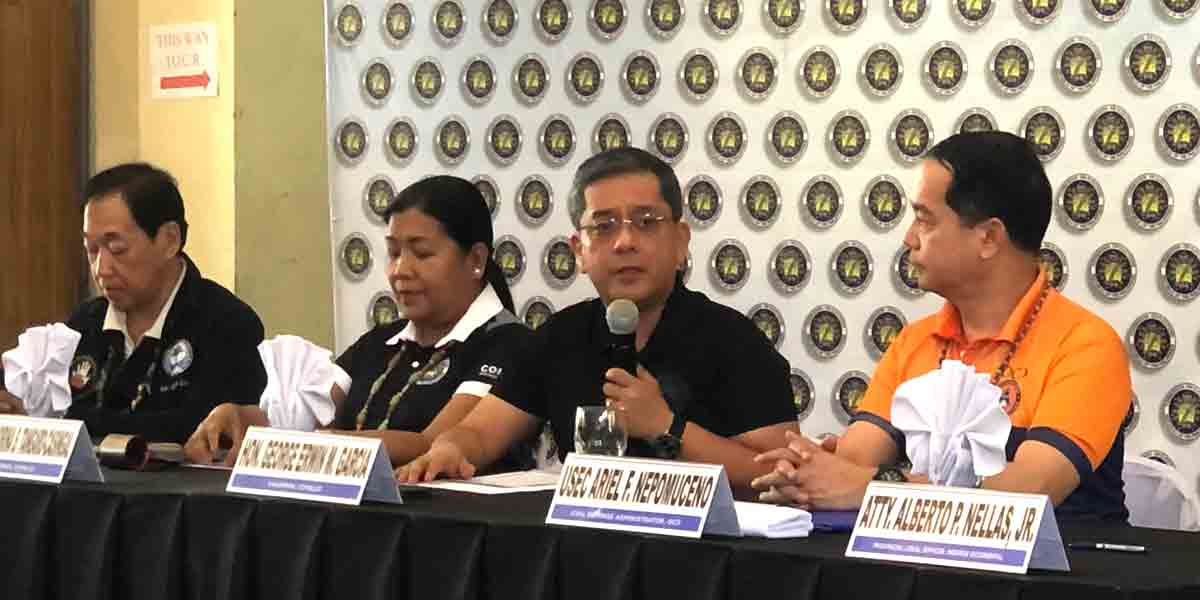 By Atty. Eduardo T. Reyes III
By Atty. Eduardo T. Reyes III
“The proper initial question for any court to ask is whether it has jurisdiction over a particular case; if the answer is no, it need not- and should not- decide the merits”(p. 184, A March of Liberty: A Constitutional History of the United States, by Urofsky, Knopf, New York 1988 citing Marbury v. Madison [1803]).
This is how important jurisdiction is as a pre-condition for courts to begin to act on a case. “Jurisdiction refers to the power and authority of the court to hear, try, and decide a case.” (United Coconut Planters Bank v. Sps. Alison Ang-Sy and Guillermo Sy, et al., G.R. No. 204753. March 27, 2019).
The importance of jurisdiction having been said, the next important thing to lay stress on is the question of how courts ascertain the propriety of the case which was filed in a certain court. To this, jurisprudence explains further that:
“Jurisdiction is defined as the power and authority of the courts to hear, try, and decide cases. What determines the jurisdiction of the court is the nature of the action pleaded as appearing from the allegations in the complaint. The averments and the character of the relief sought are the ones to be consulted. Once vested by the allegations in the complaint, jurisdiction also remains vested, irrespective of whether or not the plaintiff is entitled to recover upon all or some of the claims asserted therein. (Lucila David and the Heirs of Rene F. Aguas, namely: Princess Luren D. Aguas, et al. v. Cherry S. Calilung, G.R. No. 241036. January 26, 2021). In turn, jurisdiction over the nature and the subject matter of the case is conferred by the law, and is determined by the allegations in the complaint, regardless of whether or not the plaintiff is entitled thereto. (Eduviges B. Almazan v. Perla E. Bacolod, et al., G.R. No. 227529. June 16, 2021).
In brief, courts judge their jurisdiction on the basis of two (2) things: 1) The nature of the case as alleged in the complaint; and, 2)The law that is in force at the time of the filing of the case.
Signed into law on 30 July 2021 and poised to take effect on 14 August 2021 after its publication in two (2) national newspapers of general circulation, Republic Act No. R.A. 11576 otherwise known as AN ACT FURTHER EXPANDING THE JURISDICTION OF THE METROPOLITAN TRIAL COURTS, MUNICIPAL TRIAL COURTS IN CITIES, MUNICIPAL TRIAL COURTS, AND MUNICIPAL CIRCUIT TRIAL COURTS, AMENDING FOR THE PURPOSE BATAS PAMBANSA BLG. 129 OTHERWISE KNOWN AS “THE JUDICIARY REORGANIZATION ACT OF 1980”, AS AMENDED, increased the jurisdictional ceiling of the municipal trial courts (MTCs).
Bifurcated into personal actions on one hand and real actions on the other, the jurisdictional wingspan of MTCs had been significantly expanded. The new jurisdictional amounts are now as follows:
- Personal actions
All civil actions and probate proceedings, testate and intestate, including the grant of provisional remedies in proper cases where the value of the personal property, estate, or amount of the demand does not exceed Two million pesos (P2,000,000.00) exclusive of interest , damages of whatever kind, attorney’s fees, litigation expenses, and costs.
- Real actions
which involve title to or possession of, real property, or any interest therein, and probate proceedings, where the assessed value does not exceed Four hundred thousand pesos P400,000.00.
This is a big lurch given that pursuant to the original law which is BP 129 as amended by R.A. 7691 (which mandated a hike in the jurisdictional amount periodically), the MTC’s jurisdictional ceilings before R.A. 11576 will come into effect, are:
- Personal actions
Civil actions and probate proceedings, testate and intestate, including the grant of provisional remedies in proper cases where the value of the personal property, estate, or amount of the demand does not exceed Three hundred thousand pesos (P300,000.00) or in Metro Manila, Four hundred thousand pesos P400,000.00 exclusive of interest , damages of whatever kind, attorney’s fees, litigation expenses, and costs.
- Real actions
which involve title to or possession of, real property, or any interest therein, and probate proceedings, where the assessed value does not exceed Twenty thousand pesos P20,000.00, or in Metro Manila, where the assessed value does not exceed Fifty thousand pesos P50,000.00.
The increase is prospective in nature which means that this will be applied “prospectively to all civil cases filed in the second level courts and first level courts from the date of its effectivity”; or as earlier said, presumably on 14 August 2021 pursuant to Section 4 of R.A. R.A. 11576.
There was a time when the MTCs were referred to as “lower courts”; or worse, as “inferior courts”. But this had to be changed in order to avoid any misinterpretation that the MTCs are “substandard” or “inferior” in their truest meaning. Now, the more politically -let alone judicially- correct term is “first level courts”. The Regional Trial Courts (RTCs) are called “second level courts”, the Court of Appeals (CA) as “appellate court” and of course the Supreme Court (SC) as “the highest court of the land”.
With the buffing up of the jurisdictional muscle of the MTCs, many civil cases which used to be cognizable by the RTCs will now be filed with the MTCs. This will necessarily take the load off the RTCs which are trying and deciding both cases originally-filed with said courts and those elevated on appeal from cases decided by the MTCs. Now, the MTCs will have a panoply of cases to try within their domain.
Assuredly, the passage of R.A. 11576 will disperse the false notion that the MTCs only play second fiddle to the RTCs.
(The author is the senior partner of ET Reyes III & Associates– a law firm based in Iloilo City. He is a litigation attorney, a law professor and a book author. His website is etriiilaw.com).






















